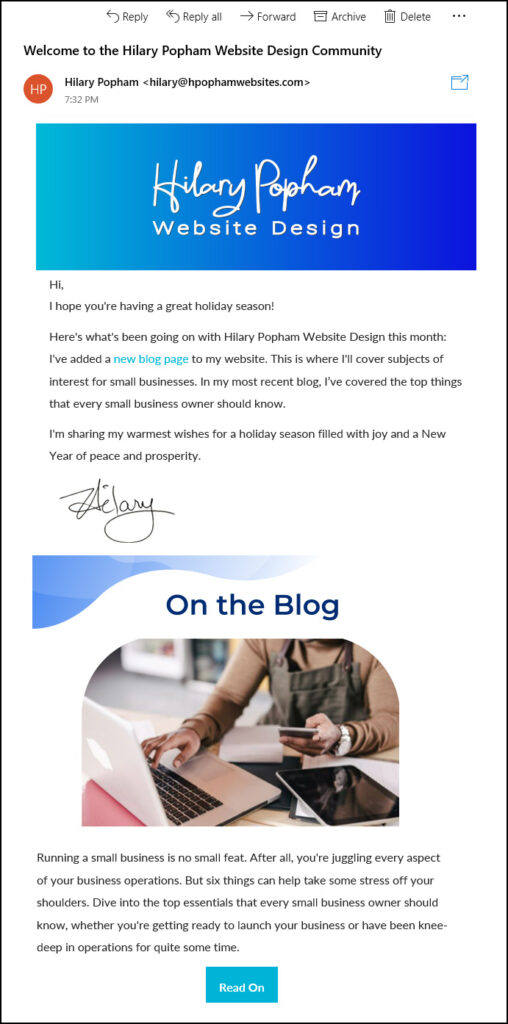For the past few months, talk about the recession has been all over the news. It’s been filling the conversations we’re having with friends and family (and customers), and it’s been top-of-mind while planning for our small businesses in 2023. But what exactly is a recession? Are we actually in one? And how can you plan to survive and scale during a recession? I’m unpacking all the answers to your most pressing questions in this recession-centric blog.
Are We in a Recession?
Before we dive into all the specifics, let’s camp out in the term “recession” for a few minutes. Let’s set up a tent and grab some S’mores to roast while we delve into what this term means and if we’re in a recession now.
The most common definition of a recession is when the gross domestic product, or GDP for short, has declined for two quarters in a row. GDP is the complete value of all services and goods produced in the United States. If this sounds a bit complicated, think of it this way: When the economy goes down (i.e., stock market downturns, company layoffs, and businesses go bankrupt) and stays down consistently for six months to a year, there’s a good chance that we’re in a recession.
So, are we in a recession? Most experts agree that we entered a recession in the summer of 2022. But first things first, this does not mean we need to stockpile all the toilet paper in aisle 3! What this means, instead, is that we need to keep cool heads and use innovative decision-making skills to survive and thrive for our best year yet in 2023 for our small businesses.
One survey cited in Business News Daily found that every three out of four small business owners surveyed are dealing with a rising cost in supplies. While about a quarter of those polled is able to absorb the costs, it’s hurting the remaining three quarters. For local small businesses, taking every precaution to weather a tough financial economy now can make a substantial difference in 2023.
Five Ways to Survive and Scale During a Recession
- Use a Magnifying Glass on Your Business Expenditures
- Talk to Your Suppliers Today
- Build an Agile Workforce and Flexible Tasks
- Adjust Your Service Offerings
- Take Your Customer Service to the Next Level
Use a Magnifying Glass on Your Business Expenditures
Do you know what you’re spending your business financials on? For many startups and small businesses in their first months or year, it can be easy to push aside the financials and plan to tackle them later on. But instead, if you add it to your weekly agenda and dive into it a little bit at a time, it can make all the difference in forecasting the next few months to the year ahead.
When considering a thoughtful approach to business expenses, you may want to start with a few broad categories.
I’d recommend starting with these general categories:
- Vendors and suppliers
- Software and apps
- Office supplies
- Advertising and marketing
- Legal and accounting services
- Utilities
Take a notepad and use one page for each upcoming month. List out your categories and add in projected totals for each. After each expense is deducted, include a line for the actual cost. With this method, you’ll see exactly where your business expenditures are going. You may stumble upon the software you’re not using anymore, more competitively-priced vendors, and other gems for saving a bit of green for the coming year.
Talk to Your Suppliers Today
Inflation and supply shortages are causing big problems for small businesses like yours. With increases at a 40-year high and supplies back ordered for months, it’s adding another plate for small business owners to juggle.
One strategy you might want to try to curtail surprise price hikes and backorders is to get in touch with your suppliers. By taking this actionable step, you’ll be able to determine directly from your suppliers the current situation for receiving your goods.
When talking with your supplier, ask about ordering ahead and in bulk for a discount. I recently heard from a colleague about a nonprofit business that did this recently. They found that they could save thousands by ordering in bulk ahead of a price increase and renting a storage facility to hold the excess product. So check with your supplier if you can order in bulk, and if the numbers work out, you may save countless dollars that you can then reallocate to other areas.
Build an Agile Workforce and Flexible Tasks
If you’re working with a team, you may consider investing some extra time this coming week to see if you can leverage their talent and resources. For example, is your team flexible with work tasks and hours? Do you see some untapped areas of talent that they could help with? Frequently, team members who are passionate about what they do will naturally gravitate toward tasks they enjoy and have skills with. Encourage this by working closely with them and fostering those skills in areas they’re already excited about.
Another aspect of building an agile workforce is considering hiring remotely. Since the COVID-19 pandemic, small businesses have become much more commonplace to hire employees from across their state and the country. With a computer in hand and a high-speed internet connection, it’s becoming more accessible than ever to work with a team that’s geographically all over the map. You may be able to save extra funds by hiring highly skilled remote employees or freelancers for specific one-time projects. After all, they’ll be able to manage the project from start to finish and handle all the details.
As a freelancer myself, you may be looking to hire a web designer. If so, I invite you to connect with me today. I specialize in building small business websites locally in Bend, Oregon, and nationally. I would be happy to talk with you and learn all about your business and website needs.
Additionally, I recommend checking out UpWork for their broad talent pool of freelancers if this sounds like a possible fit for your business. Upwork began over two decades ago by pioneering a better way of working, helping businesses find more flexibility and connecting talent with more opportunities. You can narrow freelance searches by hourly rate, geographic location, job success rate, and more.
Adjust Your Service Offerings
A recession is bound to affect your customers too. Most likely, they’ll be more thoughtful before investing in a significant service or long-term project. Now is the time to be conscientious with your service offering rates. You might consider your most extensive package bite-sized portions as a separate service.
For example, I have a client who owns a meditation business. She does in-person meditations that reduce stress, but she also creates personalized recorded meditations that you can play over and over whenever to need to de-stress. If she wanted to offer something smaller than her usual hour-long meditation, she could offer a customized mini package that someone could give as a gift. For a small landscaping business, this could include an offering for building a mini garden in one section or a light landscaping package catered around a specific clientele’s pain points.
Still not sure how you could adjust your offerings? Grab your favorite notepad and set the timer for ten minutes. Dream big and jot down whatever comes to mind. Don’t erase, cross out, or limit yourself. Sometimes your best ideas come when you’re exploring every possibility. Additionally, check with your customers to see if they’d be interested in this service, or ask your closest family and friends. They’ll surely give you some great inspiration and encouragement.
Take Your Customer Service to the Next Level
Along with adjusting your offerings, you’ll also want to take your customer service to the next level. With a shaky first quarter projected by some experts and no clear end in sight for the recession, you’ll want to ensure that your customers love your services and come back again and again, despite the economic climate.
If you’re a B2B or business-to-business, you’ll want to show your customers how they can better safeguard from the recession with your products. Center your branding around the message that if they invest a bit now, they can weather the recession, significantly if the economy worsens, by strengthening their business resources and tools with your service offerings. If you’re a B2C or business-to-customer, you’ll want to focus on addressing your customer’s pain points and helping them feel heard and validated. Showcase how your services or product can resolve their specific pain points.
Additionally, you’ll want to give an extra thank-you to your most loyal customers. This could look like an exclusive coupon percentage off their next service, a bonus free session, or a 15-minute add-on for being a loyal customer. Or it could be a referral deal, where they, and your next new customer, reap the rewards of word-of-mouth advertising.
Do Your Best to Weather the Recession
Although the financial climate may not seem ideal, a recession is a great time to pause, reassess, and move forward with confidence in what your small business offers, who you work with and alongside, and how you serve your customers. By working through each of these tips, I hope you can help your small business not just survive but scale during the coming year. I have confidence that you can do it!



